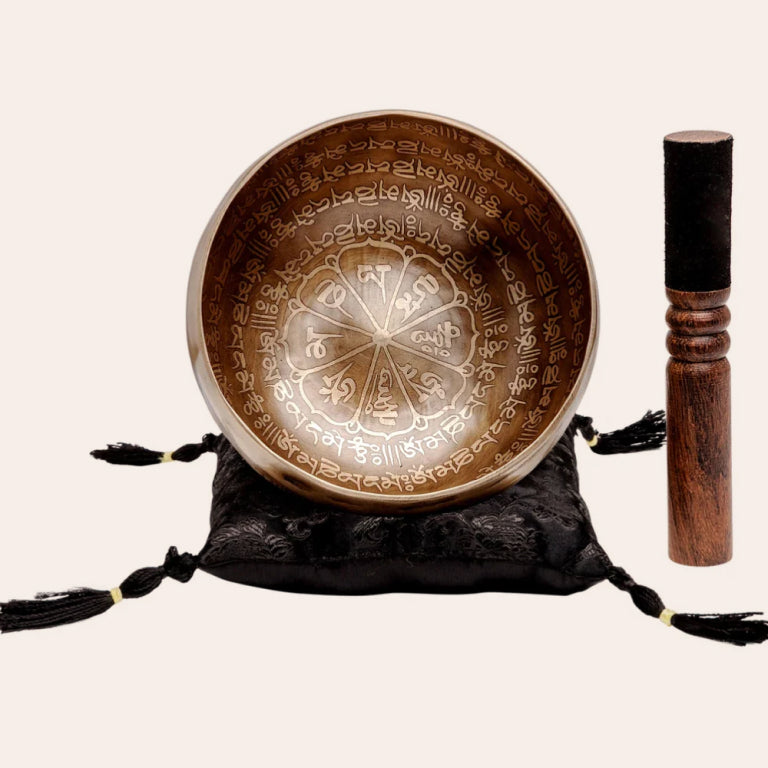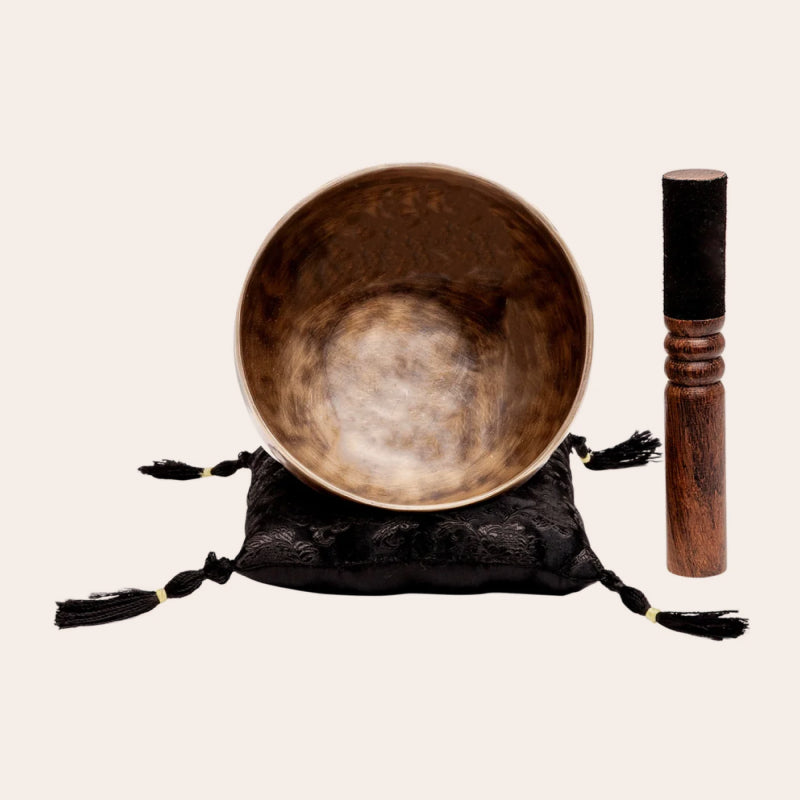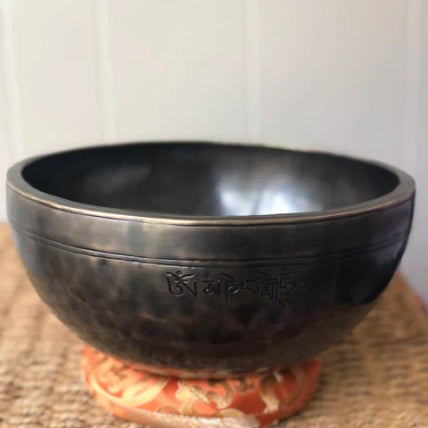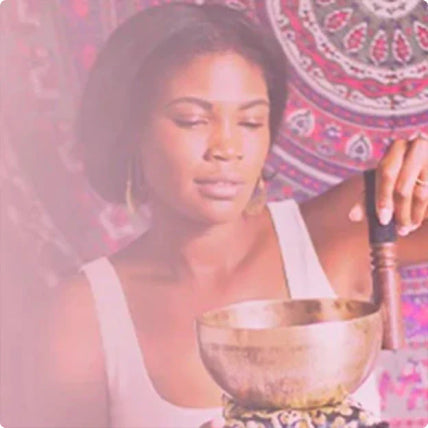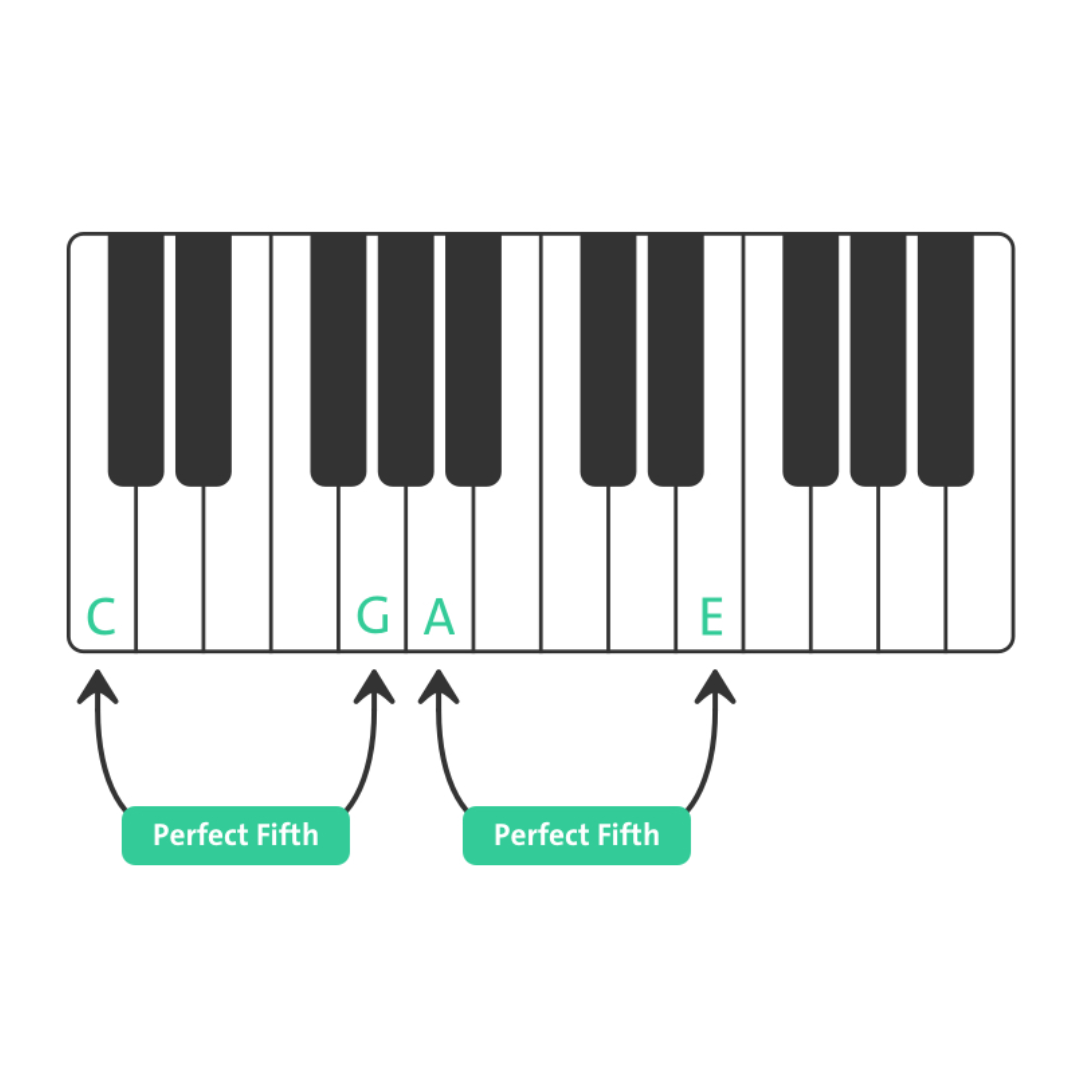"What side of the singing bowl striker should I use?"
The question comes in many times per week -- and in this short guide, we will clarify for you which side to use, and the benefits of what side you choose!
Both Sides Are Great
Singing bowl strikers usually have two distinct sides: one wrapped in soft material, often felt, sued or leather -- and the other made of wood. Each side offers unique benefits, making both a great choice, depending on the desired outcome.
The Wrapped Side
Using the wrapped side of the striker is ideal for those who want to create sounds, emphasizing the fundamental note of the bowl. When you play the bowl around the rim with the wrapped side of your striker, it produces a clear and pure sound that emphasizes the fundamental frequency of the bowl.
The soft material of the wrapped side dampens the higher overtones, allowing the fundamental note to resonate prominently. This creates a soothing and calming sound that is perfect for meditation, relaxation, and sound therapy sessions.
The Wooden Side
On the other hand, using the wooden side of the striker highlights the first overtones of the bowl. When you play bowl with the wooden side of the striker, it produces a brighter and more vibrant sound compared to the wrapped side.
The wooden side of the striker enhances the higher frequencies and overtones of the bowl, creating a richer and more complex sound. This can add depth and dimension to your meditation practice or sound healing sessions, making them more dynamic and engaging.
Conclusion
In conclusion, both the wrapped side and the wooden side of a singing bowl striker are great choices, and they produce different results. The wrapped side emphasizes the bowl's fundamental note, creating a clear and soothing sound, while the wooden side highlights the first overtones, producing a richer and more complex sound.
Experimenting with both sides of the striker allows you to explore the full range of sounds and vibrations that your singing bowl has to offer. Whether you prefer the pure and calming tones of the wrapped side or the vibrant and dynamic sound of the wooden side, the choice ultimately depends on your personal preference and the desired outcome of your meditation or sound therapy session.

